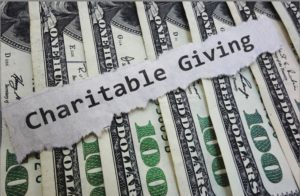2020 is the year of “out with the old, in with the new.” That is particularly true in the world of retirement planning. The old, canned advice was for retirees and people nearing retirement to gradually transition away from stocks and towards an increasingly bond-heavy portfolio. When bonds offered reasonable return rates and were stable investments, this advice meant that individual investors could secure predictable income streams from investments without risking the money they worked so hard to earn. Generation after generation, this advice empowered people to live a dignified life in retirement without fear that municipalities, companies, and the U.S. government would fall short on their end of the bargain.
Everything changed over the past decade, and bonds lost their luster. The notes that historically paid investors between 5% and 13% saw their yield slashed year after year. The cuts created the current environment, which has the government paying less than 1.25% on their 30-year bonds.
As a new generation of investors nears retirees, one question seems to unite them. Are bonds still worth holding in a retirement portfolio? The answer to this question is a resounding “yes,” but retirees need to rework their investment strategies to ensure that they do not run out of money later.
Old Advice – How Much of Your Portfolio Should be in Bonds?
Conventional wisdom maintained that retirees could easily decide what percentage of their portfolio should be invested in bonds by subtracting their age from 100. The resulting number was the “right” percent of their net worth that should be placed in bond funds. Under this simple approach, a 35-year-old would invest 65% of their net worth in stocks and 35% in bonds. An 80-year-old would hold just 20% of their net worth in stocks and invest 80% of their money into bonds.
Does this time-tested approach still work for today’s retirees? That is the question that Vanguard’s advisory service set out to answer when it tested various mixtures of stocks and bonds against historical market performance. That research from Vanguard found that bond-heavy portfolios severely underperformed the market and were inappropriate for many investors. The missed growth would increase the odds that retirees would run out of money as the retiree aged.
The performance difference between a 20% stock, 80% bond portfolio, and a 50% stock, 50% bond portfolio over the past century was an eye-popping 24%. Surprisingly, portfolios that excessively invested in bonds or followed the traditional advice experienced about the same volatility and risk of loss. It seems like investors following regular advice gave up a lot of returns without much upside.
Just what accounted for the lousy performance of bonds? First, the Federal Reserve made deliberate attempts to cut interest rates over the years to promote stock market investment. As interest rates fell, new bonds stopped offering reasonable rates of return and lost much of their appeal. Second, the stock market is just that good of an investment. Low fee index funds consistently outperform stock pickers, hedge funds, and yes, even bonds. Sometimes the best strategy is to go with the flow, and that seems to be true when it comes to investing.
New Advice
For all that they lack, bonds have their place in well-balanced portfolios and can offer unique advantages that cannot be replicated with other investments. For instance, municipal bonds can offer tax-free interest payments that make them highly attractive to high-income earners. Investments in the U.S. government and high-quality companies add stability to a portfolio and allows some money to be held in reserve to address a bear market that falls quickly. Since bond prices are mostly unrelated to the stock market, a dip in the stock market typically does not impact bond prices. Investors can transition out of those bonds and buy new shares of stock at a discounted price or use the bond money to support their lifestyle while allowing their stock investments to rebound.
Bond ladders are also an attractive strategy for recent retirees. A bond ladder is accomplished by buying bonds and CDs with varying maturity dates. Investors hold bonds in 6 months, one-year, and three-year durations with the expectation that the bonds could be sold or cashed-out to cover unforeseen expenses. These bond ladders are revolving emergency funds that earn more interest than a high yield savings account.
Most retirees would do well to simplify their retirement portfolios. Investing in a simple target retirement fund and focusing on low fees produces a reasonable, steady return rate. The advantage of these funds is that they are expertly managed and will gradually transition to a higher bond position as you near retirement. They will always hold domestic and international stocks, so you never need to worry about missing out on the next stock market runup.
So go ahead, reconsider what roles bonds play in your retirement portfolio. Just do not be so ready to get rid of them entirely!
Investment Options Outside of Bonds
Investing in high-quality student loans can be a better investment alternative than bonds. That is why I have launched Impact Capital Funds, Inc. Through its funds, accredited investors can earn a bond-like target yield of 4%, and like an intermediate-term bond, the fund will have a 7-year maturity or term. Beginning in January 2021 Impact Capital Funds will open its first investment fund that will invest primarily in the loans of Notre Dame alumni. During the last decade, Notre Dame graduates have repaid their Federal undergraduate student loans in full and on time 99.4% of the time, ranking their loan default rate 9th-best in the U.S.
For investors who are non-accredited, there may be no choice but to accept the low rates available on bonds today. Keeping in mind that interest rates are cyclical, there will come a future time when bond yields become more attractive again.



